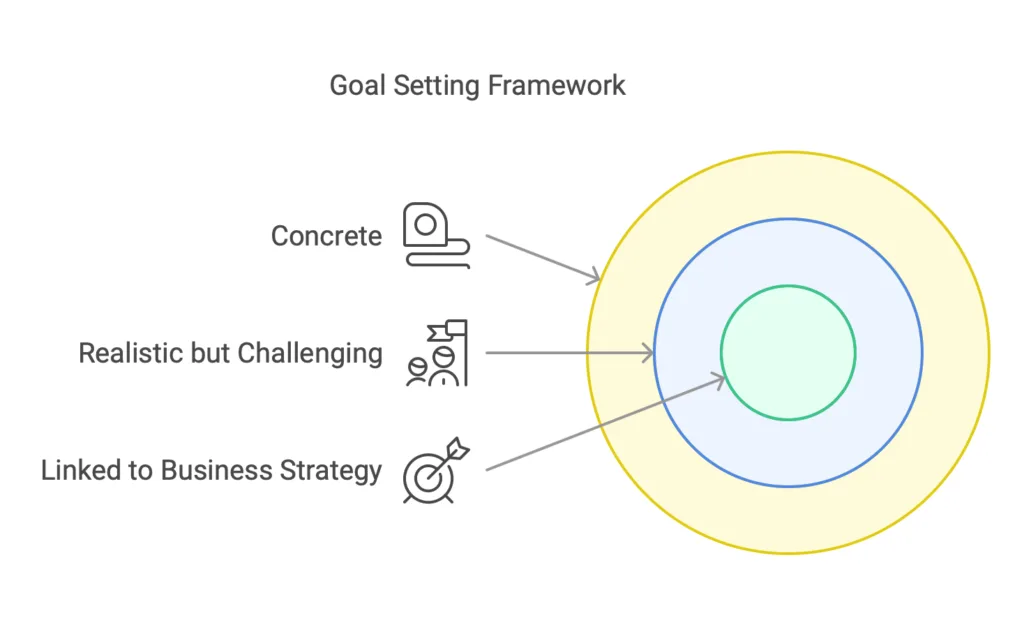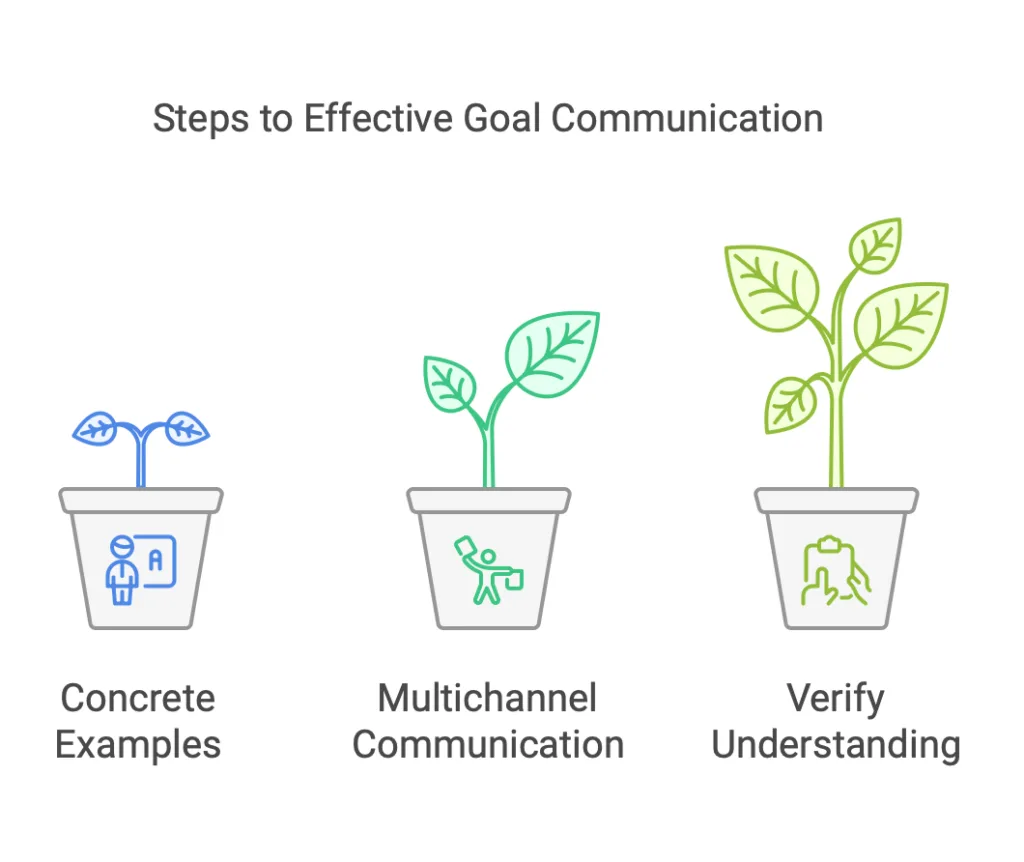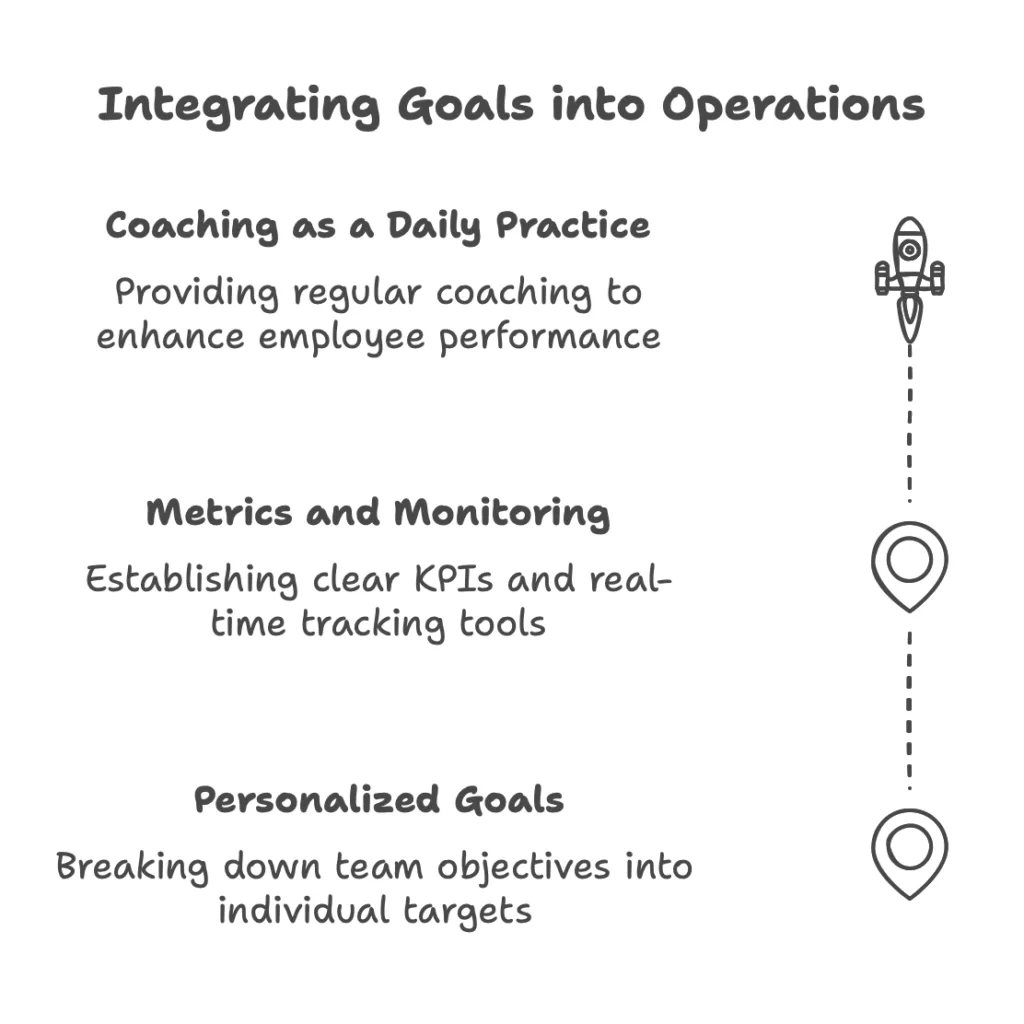A new article series on change management in contact centers
That’s why we wanted to create a comprehensive article series on how to achieve goals, enhance the customer experience, and ensure a positive employee experience in a contact center environment. In practice, this series consists of six articles that take into account leadership aspects and, most importantly, how to manage change and practically influence human behavior.
This is the first part of the series. If you wish, you can download the entire series in advance using the form at the end of this article.
Change begins with clear goals
In a contact center environment, clear goals and successful communication are key to achieving better results and fostering a cohesive work culture. But how are goals practically set, understood, and integrated into daily activities?
1. Defining Goals: Clarity and Realism
The first step is to establish clear and realistic goals. A goal should be:
- Concrete: Avoid vague objectives like “improve customer experience.” Instead, use measurable metrics, such as increasing NPS scores by 15% over the next four months.
- Realistic but Challenging: Goals should be achievable with available resources while encouraging employees to stretch slightly beyond their comfort zones.
- Linked to Business Strategy: Ensure goals align with broader organizational objectives, such as boosting customer loyalty or improving operational efficiency.

2. Communicating Goals: Prioritize Clarity
The success of goals depends on how they are communicated. Clear, open, and consistent communication ensures that every employee understands the significance of the goals and their role in achieving them.
- Concrete Examples: Explain goals with examples relevant to employees’ daily work. For instance: “If each of us secures one additional sale daily, we will meet our monthly target.”
- Multichannel Communication: Use various communication channels such as team meetings, emails, and visual presentations to reinforce and clarify goals.
- Verify Understanding: Don’t assume everyone interprets the message the same way. Ask questions and encourage employees to discuss and ask questions.

3. Integrating Goals into Daily Operations
A goal alone isn’t sufficient unless it is concretely tied to employees’ daily work. The following practices help:
- Personalized Goals: Break down the team’s goal into individual targets. For example, if the team target is 100 additional sales per month, individual goals could be five additional sales per week.
- Metrics and Monitoring: Define clear KPIs to help employees track their progress. Provide real-time tools such as dashboards or solutions like the QualityDesk app for monitoring.
- Coaching as a Daily Practice: Use coaching to help employees progress toward their goals. For instance, a coach can review specific customer interactions and offer actionable improvement tips.

4. Motivation and Recognition
Motivation is essential for achieving goals. Ensure employees find goals meaningful and reward achievements along the way.
- Small Rewards: A successful customer interaction or achieving an individual sales goal can be rewarded with a coffee voucher or a thank-you message from the team leader.
- Public Recognition: Utilize weekly meetings and internal communication channels to acknowledge and celebrate outstanding performances.
5. Continuous Evaluation of Goals
Goals are not set in stone. Regularly assess and update them as needed. If the team finds a goal too challenging or too easy, adjustments should be made. Use team feedback to improve goal setting in the future.
Conclusion
Clear goals and effective communication not only help achieve better results but also strengthen employee engagement and motivation. When goals are understandable, realistic, and integrated into daily work, they become actionable steps toward organizational success. In a contact center environment, this means improved customer experience, happier employees, and better business outcomes.
The next part of the article series is now available to read through this link: Leadership Commitment: The Key to Successful Change in a Contact Center



